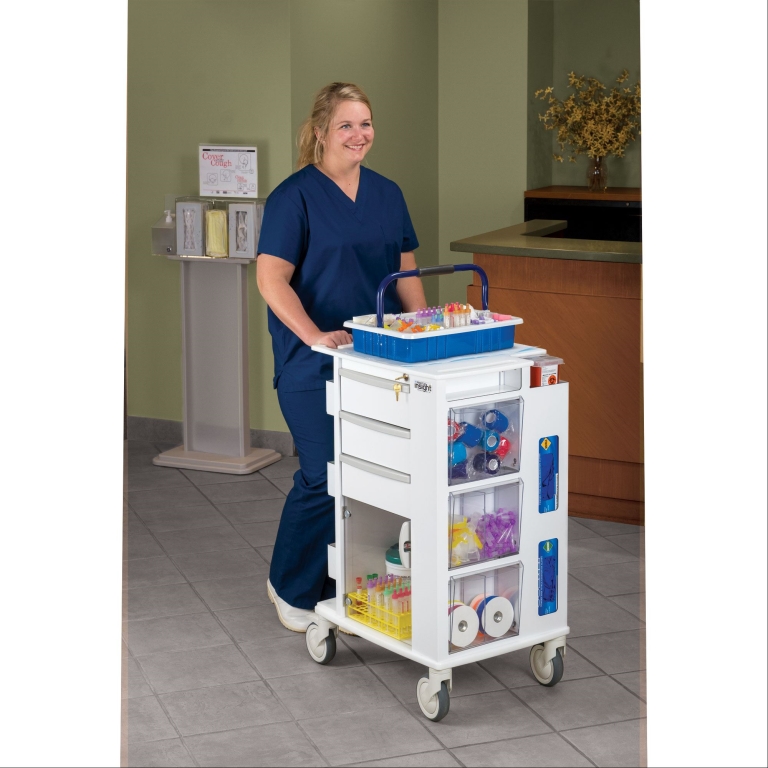
How to Become a Certified Phlebotomist: Essential Education and Training tips
Embarking on a career as a certified phlebotomist is a rewarding pathway within teh healthcare industry. These professionals are vital in collecting blood samples for diagnostic testing, transfusions, and research, ensuring patient safety and accurate results. If you’re interested in a fast-paced, fulfilling role in healthcare, this guide will walk you through the essential education, training tips, and practical steps to become a certified phlebotomist.
introduction
Whether you’re just starting your healthcare journey or seeking to specialize in medical laboratory procedures, becoming a certified phlebotomist can open doors to exciting employment opportunities. This profession combines technical skills with patient care, making it both challenging and deeply satisfying.The process involves acquiring the right education, completing practical training, passing certification exams, and maintaining your credentials through continuous education. Let’s explore each step in detail to help you succeed.
Essential Education and Certification Requirements to Become a Phlebotomist
Before diving into phlebotomy training, it’s crucial to understand the basic educational prerequisites and certification pathways. While requirements vary by state and employer, the following are common standards:
Minimum Education Qualifications
- High school diploma or GED is typically required.
- Some programs may prefer or require post-secondary education, such as an associate degree.
- Basic knowledge of anatomy, physiology, and medical terminology is beneficial.
Phlebotomy Certification Options
Certification is often mandatory or highly recommended to enhance employability and credibility. popular certification bodies include:
- American Society for Clinical Pathology (ASCP)
- National Phlebotomy Association (NPA)
- American Medical technologists (AMT)
- National Healthcareer Association (NHA)
Each institution offers comprehensive certification exams that verify your competence as a professional phlebotomist. Certification requirements typically include documented training hours and practical experience.
Recommended Education Pathways for Aspiring Phlebotomists
Choosing the right educational pathway can make your journey smoother. Here are common options:
- Certificate programs: short-term courses offered by community colleges, vocational schools, or online institutions that focus primarily on phlebotomy procedures and patient care.
- Associate Degree Programs: More comprehensive programs in medical assisting, health sciences, or related fields that include phlebotomy training as part of the curriculum.
Practical Training Tips for Aspiring Certified Phlebotomists
Hands-on experience is critical in mastering blood collection techniques safely and effectively. Here’s how to maximize your training:
- Enroll in supervised clinical practice: Many educational programs include clinical rotations in hospitals or clinics.
- Practice blood draws under supervision: Gaining acceptance and confidence in real scenarios is essential for certification and employment.
- Develop patient communication skills: Be empathetic, clear, and professional when interacting with diverse patient populations.
- Learn safety protocols: Always prioritize infection control, proper needle disposal, and patient safety.
Preparing for the Phlebotomy Certification Exam
to pass the certification exam, thorough preparation is vital. Consider these tips:
- Use official study guides: Most certifying bodies provide preparation materials.
- Attend review courses: These can focus your study and clarify difficult concepts.
- Practice sample tests: Simulating exam conditions helps build confidence and time management skills.
- Review key topics: Anatomy, blood collection procedures, safety protocols, and disease transmission prevention are common content areas.
Benefits of Becoming a Certified Phlebotomist
- Better job prospects and higher salary potential
- Professional recognition and credibility
- Opportunities for career advancement in healthcare settings
- Fulfillment in assisting patients and healthcare teams
- Flexible work environments including hospitals, clinics, and laboratories
Practical Tips and Overcoming Challenges in Phlebotomy
Starting your career in phlebotomy presents unique challenges, such as dealing with anxious patients or difficult vascular access. Here are some practical tips:
- Stay calm and patient: Building rapport alleviates patient anxiety.
- Practice are essential skills: Regular practice improves technique and reduces discomfort.
- Stay organized: Keep your supplies sterilized and ready for each procedure.
- Seek mentorship: Learning from experienced professionals adds confidence and insight.
Real-Life case Studies of Prosperous Phlebotomists
| Case Study | Key Takeaways |
|---|---|
| Jane’s Journey | Completed a 6-week certificate program, achieved certification, and secured a position in a local hospital within 3 months. Emphasized patient care skills and continuous learning. |
| Mike’s Experience | Attended an online training course, gained practical experience through volunteering, and became certified through NHA. Now mentors new students in his clinic. |
First-Hand Experience of Certified Phlebotomists
“Getting certified boosted my confidence and opened doors to better job opportunities. The training taught me not only procedures but also how to connect with patients and manage stressful situations,” shares Sarah, a certified phlebotomist at a community clinic.
Conclusion
Becoming a certified phlebotomist is an attainable goal for those passionate about healthcare and patient care. By following a structured educational pathway, gaining practical experience, and preparing diligently for certification exams, you can launch a successful career in phlebotomy. Remember, continuous learning and honing your skills are key to excelling in this vital healthcare profession. start your journey today and make a difference in countless patients’ lives!